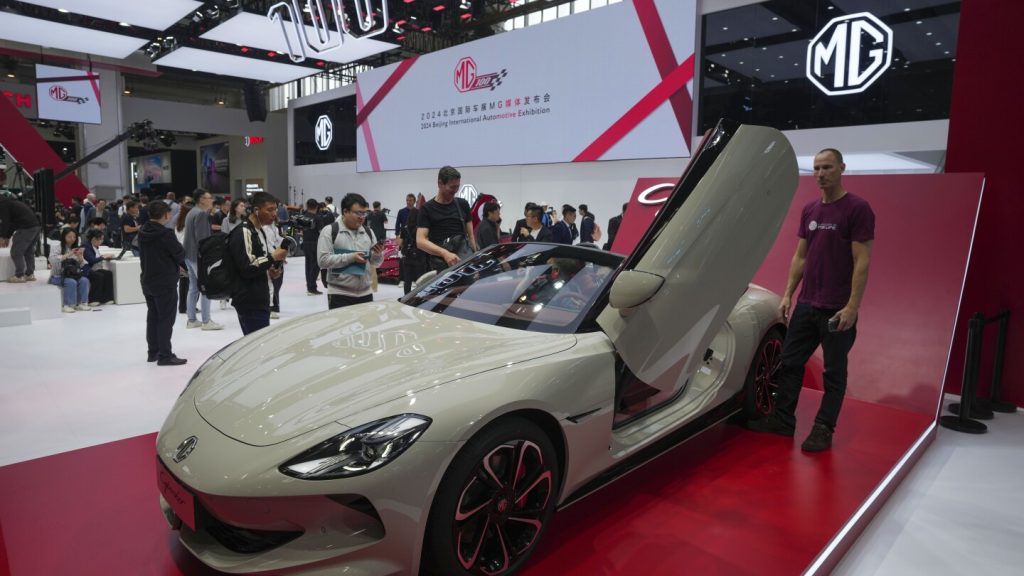China’s electric car makers are showcasing innovative designs at the Beijing Auto Show, such as cars with swiveling front seats and large flat screens. Nissan and Toyota have announced tie-ups with Chinese tech companies to incorporate AI-enabled connectivity in their vehicles. The push for green energy in China has transformed the auto market, with electric vehicle sales reaching 25% of new car sales last year. Chinese car makers are adding digital features and connectivity to appeal to younger, tech-savvy consumers.
The proliferation of electric vehicle makers in China has led to a fierce price war, with many companies struggling to turn a profit. The country’s largest EV maker, BYD, showcased dual-mode plug-in cars that can run on electricity or as hybrids. However, traditional car makers like Chery envision a future where fuel vehicles still make up a significant portion of the market. With competition intensifying at home, Chinese car makers are increasingly looking to expand overseas, raising concerns in Europe and the U.S. about the impact of cheaper Chinese imports.
Chinese car makers are starting to build plants overseas, with BYD setting up a factory in Brazil. Foreign automakers are also accelerating the development of new electric car models with digital connectivity to stay competitive in the Chinese market. Companies like Volkswagen and Nissan are partnering with Chinese tech firms to incorporate AI capabilities and cloud computing in their vehicles. Volvo, owned by Geely, emphasized a simpler approach to digitalization in its cars, focusing on utility over novelty.
American brands like Lincoln, Cadillac, and Ford also made an appearance at the Beijing Auto Show, showcasing their latest models. Ford highlighted the history of iconic models like the Mustang and Bronco, emphasizing their evolution as “sport utility vehicles.” Overall, the auto industry in China is evolving rapidly, with a shift towards electric vehicles and digital connectivity shaping the future of the market. Chinese car makers are at the forefront of innovation, challenging established players to adapt to changing consumer preferences and technological advancements.


